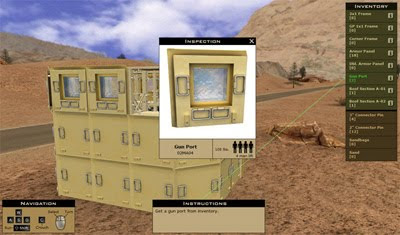When calculating the return on investment that a training simulator offers there are 2 main avenues to focus on. The first is that you will be able to reduce costs by avoiding accidents, and the financial burden that accompanies them. The second is that you will be able to increase revenue by having a more efficient and productive workforce, capable of moving more product in less time.
Take for example a forklift operator training simulator. The goal of a forklift training simulator is to minimize the risks posed by using a forklift in the workplace, and increase employee efficiency. However, when looking at the same project from an ROI perspective the goals of the project are cost reductions and increased revenue.
- Cost Reductions: In order to understand the cost reductions that a forklift training simulation provides, one must first understand how a company would be affected financially if an employee had a forklift accident.
- Lawsuits and Liabilities: Companies regularly suffer large financial losses due to lawsuits and liabilities after a forklift accident. In addition to attorney fees, court costs and settlement amounts, companies often end up paying medical bills, disability payments, and funeral costs. Compare these amounts to the cost to develop a forklift training simulator, and your return on investment has just been handed to you.
- Injury or Death: In addition to the costs associated with forklift accidents, keeping employees safe should be every company's goal. The Occupational Safety and Health Administration (OSHA) estimates that there are approximately 85 forklift fatalities every year, in addition to 34,900 serious injuries and 61,800 non-serious injuries every year. OSHA also estimates that 70% of workplace accidents could have been avoided with proper training. Training simulators are one of the most effective learning tools and will help your company reduce their number of accidents immediately.
- Material Loss: Forklift accidents can damage not only the forklift, but other valuable company equipment, facilities, or merchandise. While a collision with a wall or shelf may be inconsequential, crashing a forklift into a gas or electrical system is dangerous and costly. Employees who experience accidents in the virtual world are able to learn from those mistakes, and are less likely to have accidents in the real-world.
- Maintenance Costs: Reductions in maintenance costs are not usually associated with safety training, but that's a mistake. Once a company is using a simulator to train their employees, their maintenance costs will drop since operators will no longer be misusing the equipment - causing unnecessary wear-and-tear on the machine.
- Increased Revenue: In addition to reducing costs; training simulators allow your employees to become more efficient - producing more in less time, leading to more profit for the company. With a workforce that is well trained, employees will have fewer accidents, preform their jobs faster, and work more confidently - ultimately leading to a higher performing workforce. Training simulators lead to higher efficiency levels by providing a lifelike experience for operators to train within, so they can master their techniques and work more safely and quickly.
- Learn Best Practices: Novice operators who start their training on the simulator will be able to master every control of the machine and learn to apply best practices before they every step foot into a real-world piece of equipment. With less "on the job training" taking place, employees can hit the ground running and be more productive sooner.
- Practice in a Virtual Environment: In addition to learning how to operate a piece of heavy equipment, operators must become comfortable operating machinery within a workplace environment. Simulators allow your operators to master the spatial relations challenges posed by working in a busy warehouse that includes other forklifts, tight spaces, blind corners, foot traffic, etc.
- Operator Performance Tracking: Training simulators can track every bit of data that is generated during a simulation session, allowing for a performance tracking system to be implemented. This performance tracking system allows managers to see how their employees' training is coming along, identifying the best-of-the-best and the worst-of-the-worst, and seeing what specific skills certain employees may need to focus on. Simulators can track subtle behaviors that can go unnoticed in real-world training. Identification and correction of these mistakes further contributes to the ROI delivered by a training simulator.




